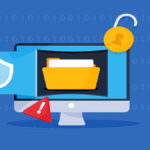You have the fulfilling responsibility of creating a positive work environment for your organization as a benefits leader. Employee benefits packages and other bonuses may, after all, help you draw in top talent, keep hold of your present workforce, and create a culture that is consistent with your beliefs with benefits administration software.
Naturally, the drawback is the amount of administrative work that benefits enrollment and benefit programs generate for you. Thankfully, you can automate your benefits administration, increase productivity, and expedite open enrollment while maintaining compliance using benefits administration software.
Software for benefits administration acts as a central location for all of your employee benefits. Having everything in one place makes it simpler for you to set up and maintain, and it makes it easier for your staff to enroll new workers.
The outcome? You have less administrative work to do, and employees make better, more informed choices regarding their benefits. We have compiled the following information about the best software platforms, features to look for, typical errors to consider, cost, and more to help you select the best benefits management software.
Top Benefits Administration Software

1. Deel
Deel can assist in hiring and offering benefits and rewards to individuals across different regions. The advantages themselves would differ based on the area. The same benefits administration software you use for payroll, contracts, timesheets, invoicing, and even some basic HR tasks would be used to ease their administration.
The easiest approach to investigate the precise perks they provide is to visit their website’s benefits tool. They show you what they can provide when you choose a nation and the kind of advantages you want.
For instance, you may choose statutory and/or common benefits if you want to employ in Canada. These include certificates, electronic and transportation coverage, and worker compensation and employment insurance.
Features:
- For PEO/ASO.
- Survey Builder.
- Employee Time Tracking.
- Immigration Management.
- Employee Scheduling.
- Employee Recognition.
- IT Asset Tracking.
- Safety Management.
- Overtime Calculation.
- Multi-Channel Distribution and many more.
Price:
- HR: Free.
- Contractor: $49/user/month.
- EOR: $599/month.
2. Remote
Staff interested in the best benefits administration systems for globally dispersed staff should pay notice, even if Remote is mostly renowned for its worldwide payroll product! This is due to the fact that, in contrast to many other suppliers, Remote owns local businesses in the nations where they do business. In broad strokes, this implies that its clients may provide their workers with a simpler, more “local” payroll and benefits experience.
Offering benefits packages that are tailored to each nation where you have workers is made possible by remote work. By offering nation-specific advantages and rewards that respect regional regulations, the platform facilitates compliance. We appreciate that, in the countries the platform serves, Remote is one of the few suppliers with local legal companies. With no middlemen, it may provide more speed and flexibility.
Both the iOS and Android applications are in excellent condition; they are user-friendly and have all the functions you need, even if they were a little difficult to find in their respective app stores.
Features:
- Multi-Country.
- Employee Onboarding.
- Employee Portal
- Employee Profiles.
- Employee Self-Service.
- Billing & Invoicing.
- Invoice Management.
- Categorization/Grouping.
- Time Off Management.
- HR Management and many more.
Price:
- HR Management: Free.
- Payroll: $29/user/month.
- Contractor Management: $29/user/month.
3. Gusto
Gusto offers comprehensive payroll services that include HR and benefits. With its integrated employee self-service, the program streamlines the process for both you and your staff while handling the administration and deductions by coordinating them with payroll.
The benefits administration features offered by Gusto have been satisfactory for us. With automated deductions and synchronization features, the program streamlines the payroll and benefits administration process. Employers and workers may easily manage benefits and obtain pertinent information, thanks to the integrated employee self-service capabilities.
The user interface of Gusto has a pleasing appearance. Its browser-based design enables a seamless user experience on a variety of devices. To help consumers maximize their benefit programs, Gusto also offers certified benefits counselors.
Because Gusto is attentive to consumer demands and keeps improving its services in response to feedback, users like the company’s customer-centric approach. The allure is increased by their open pricing policy and flexibility in the absence of long-term commitments. Additionally, Gusto provides a free account setup, which makes it easy for companies to begin going.
Features:
- Maintenance Scheduling.
- Inventory Control.
- Work Order Management.
- Job Management.
- Historical Reporting.
- Calendar Management.
Price: Starts from $40 per month.
4. OnPay
In addition to being a reliable cloud-based payroll software solution, users suggested OnPay because it provides functionality for benefits administration and HR management at a clear, reasonably priced monthly cost. The platform also offers particular payroll services (tip computations, separate tax filings, etc.) for companies in certain sectors, such as restaurants and agriculture, without charging extra.
OnPay has partnerships with several affordable benefits administration companies, allowing you to offer your workers a variety of health insurance options and 401(k) retirement plans. Even though OnPay’s integration isn’t as extensive as that of its competitor Gusto, the platform is still more affordable for many startups and small enterprises since its feature-rich HR features are available without asking customers to change their plans or pay extra.
Features:
- Payroll Outsourcing.
- Access Controls/Permissions.
- Employee Onboarding.
- Employee Management.
- Compliance Tracking.
- Payroll Reporting.
- Reporting/Analytics.
- Onboarding.
- Employee Profiles.
- Self-Service Portal and many more.
Price:
- Free for the first month.
- Base fee of $40 + $6/employee/month.
5. Bennie
Bennie is an online and mobile application that aims to simplify and increase accessibility to benefits. Employees may use it to choose a doctor, manage claims expenditure, estimate care costs, connect with a live concierge staff, and more.
Bennie is a mobile-first benefits administration software that serves as a central location for your employee benefits information. Employees just need to use the app to communicate with Ask Bennie, a knowledgeable healthcare concierge, if they have any issues about their benefits.
Bennie avoids the standard brokerage experience for employers. Rather, Bennie collaborates with significant regional and national carriers to provide your business with additional specialized advantages. To handle everything in one location, HR teams have their own backend. Moreover, clients get access to HR technology consultation and strategic advantages.
Features:
- Benefits Dashboard.
- Online Benefits Enrollment.
- Reporting/Analytics.
- View Benefits Plan Details.
- Access ID Cards.
- Live Healthcare Concierge.
- Find In-Network Doctors.
- Display & Manage Company Perks.
- Bennie Marketplace.
Price: Contact sales.
6. Namely
Namely is well-organized, easy to use, and makes use of top-notch technology. To minimize time and complexity, its payroll and HR systems are connected with its best benefits administration systems. Namely is a great option for benefits administration because of its extensive HR suite, which offers several functions.
Numerous benefit packages, including health insurance, retirement plans, and flexible spending accounts, are available for your workers to sign up for, monitor, and administer. Customizable online signup forms that provide workers with specific plans make all of this easier. To simplify data transfers and minimize mistakes caused by human input, the program also enables smooth interaction with third-party administrators and insurance companies.
A good reporting module is appreciated by users, and Namely’s can provide deep insights into benefits utilization, costs, and trends in addition to generating reports. This is a useful feature if you want to regularly improve your benefits plans and compete in the highly competitive hiring market of today.
Features:
- Document Management.
- Electronic Signature.
- Employee Benefits Administration.
- Employee Portal.
- Candidate Tracking.
- Candidate Profiles.
- Health Insurance Administration.
- Benefits Management.
- Benefits Dashboard.
- Job Posting and many more.
Price:
- Now: $9/user/month.
- Plus, Plus People & Complete: Custom pricing.
7. Rippling
When compared to other benefits administration software, Rippling is unique. It outperforms the majority of providers we examined in many areas with an astounding 500 app connections. This enables the application to contextualize spending behavior within the broader framework of employee data in addition to performing typical functions like analyzing a paper receipt picture taken with a phone.
Despite being a relatively new solution, users found that Rippling’s benefits administration capabilities stood out for their strong focus on automation. Rippling provides special features in supplement to common ones like online onboarding, benefits enrollment, and employee self-service portals.
Adding your current broker as a user or getting suggestions if you don’t have one is one noteworthy feature. Furthermore, Rippling is a master of automation as it modifies employee deductions automatically in response to qualified life events, such as changes in marital status or location.
Features:
- Policy Management.
- Turnover Tracking.
- Receipt Management.
- Reimbursement Management.
- Authentication.
- Automated Scheduling.
- Automatic User/Device Recognition.
- Email Management.
- Candidate Sourcing.
- Deployment Management and many more.
Price: Contact sales for Core & Pro.
8. Compport
Compport is an all-inclusive software as a service (SaaS) solution designed to simplify the administration of different compensation plans, such as yearly pay reviews, incentive plans, rewards programs, and more. With the help of this platform’s highly customized solution, customers may design and assess compensation plans prior to execution, taking into account factors like budget and possible effects.
Furthermore, it enables senior management to exchange digital incentive statements and offer letters with staff members and evaluate pay-related elements for their teams. Compport also tackles problems of wage fairness, offering a basis for proactive approaches to problem-solving. It improves managers’ and human resources’ decision-making, encouraging a more diverse workplace culture.
In order to promote data-driven decision-making, the platform provides a wide variety of insights, such as workforce trends, talent pipelines, pay assessments, and diversity, inclusion, and productivity measures.
Features:
- Ad hoc Reporting.
- API.
- Audit Trail.
- Benefits Management.
- Bonus Management.
- Budget Management.
- Compensation Plan Modeling.
- Compensation Statements.
- Customizable Reports.
- Customizable Templates and many more.
Price: Contact sales.
Considerations For Employee Benefits Administrators
Although the functions we just mentioned are very extensive, benefits administration software won’t relieve you of all benefits-related tasks. Furthermore, there are difficulties with benefits administration in general. Here are some factors and typical blunders to watch out for to ensure that you do benefits “right,” have effective open enrollment periods, and avoid going over your benefits budget:
Selecting perks based on what your business needs rather than anything else: There are many advantages you may provide to your staff, as you are undoubtedly well aware. Offering everything under the sun may seem like a wonderful way to attract candidates, but you may wind up producing more work and spending more money than you need to.
To put it another way, you can end up providing (and funding) advantages that your staff members never make use of. Therefore, start by considering what makes sense to your business and your staff.
Refusing to let workers choose their benefits: People are naturally drawn to having options and making their well-informed selections. Give them a variety of choices so they may choose the advantages that best suit their needs.
Compliance with mandated benefits: Companies with 50 or more full-time workers must provide certain benefits by regulations such as the Affordable Care Act. You could be assessed fees if you fail to maintain compliance. Thankfully, automatic compliance procedures are provided by many benefits admin packages, allowing you to submit the appropriate paperwork to the appropriate regulatory agencies as necessary.
Being aware of the tax-free advantages available: Benefits that are tax-free benefit both your business and its workers. For instance, both workers and your business may save money by offering tax-free perks like health savings accounts, flexible spending accounts, commuting benefits, and even tuition reimbursements.
After all, your payroll tax obligations are not affected by the pre-tax money your workers put away for these benefits. Therefore, if you don’t provide tax-free perks or if your workers aren’t using them, you can be losing money.
Costs may go up rapidly: Your benefits package can quickly become costly, particularly if it includes health insurance. There are several strategies to control your expenses, such as cost-sharing with employees (i.e., raising deductibles and employee contributions), switching vendor partners (such as transferring retirees from group plans to Medicare), and controlling pharmacy spending (e.g., promoting generic prescriptions or implementing a narrow network).
FAQ
Q: What is the purpose of using software for benefits administration?
A: All benefits activities are streamlined by benefits administration software, which gives your HR staff much-needed time. All data is stored in a single site to examine and generate comprehensive statistics on which benefits are most or least used. This gives you useful things to do while administering benefits. Lastly, using software to handle compliance for you guarantees accurate, quick, and easy reporting to the IRS and other federal agencies.
Q: What is a benefits administrator responsible for?
A: The person in charge of managing a company’s benefits programs is known as a benefits administrator or group benefits administrator. This involves organizing and managing the organization’s benefits.
Q: What does benefits management aim to achieve?
A: From the beginning of the program or project investment until the final anticipated advantage is realized, benefits management includes identifying, planning, measuring, and monitoring benefits. It seeks to ensure that the intended advantages are clear, quantifiable, agreed upon, practical, and time-bound.







